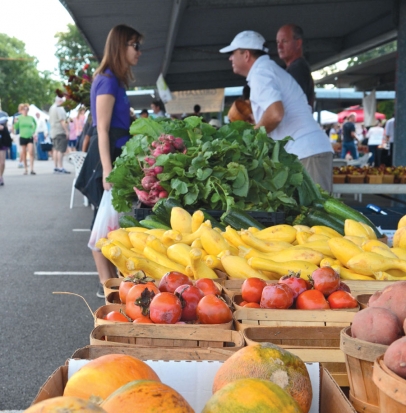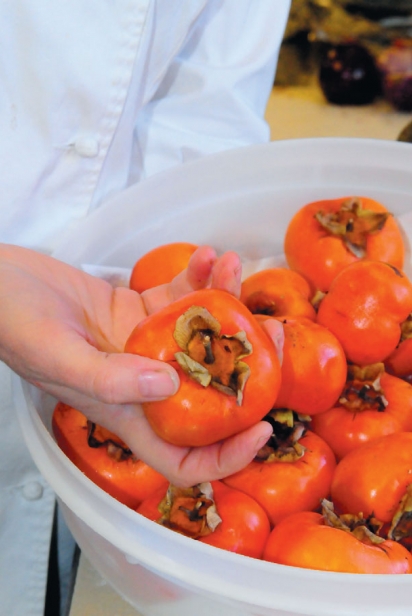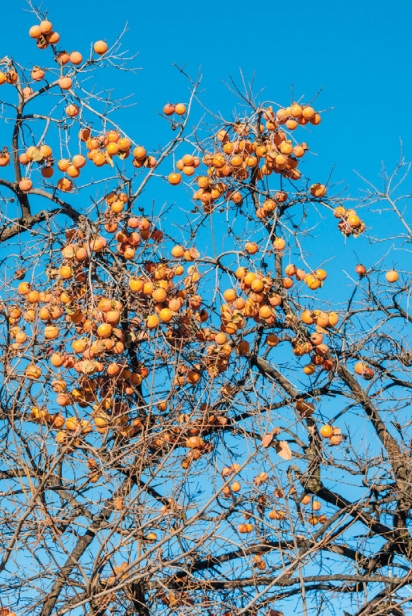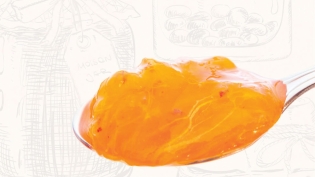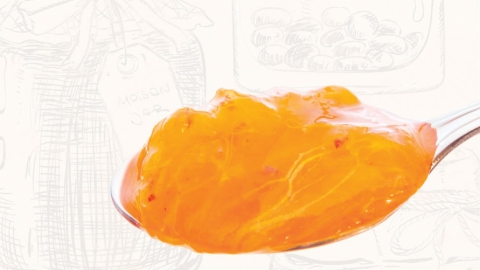The hunt for sweet October
Forgotten Flavor of a Texas Fall Fruit
There’s something special about the sweetness of a ripe persimmon, just one orbit out from honey. If I can get them, the fiery burnt orange to yellow bowls of sticky sweet gel can be found lined up on my kitchen counters every October to ripen, waiting for me to wrangle their mysterious fragrant flesh into a jar of jelly and call it a fall masterpiece.
Growing up I just knew persimmon as a food that brought the coyotes too close to the house each season. I’d not eaten a wild one from a tree, nor cooked them up into anything edible. But success making jelly with a friend’s two bags of fruit from the cultivated Asian variety she had in her backyard landed me hipster points in market circles and, more importantly, set me to hunting for more of their intense, fragrant sweetness. I wanted to forage and win what I now considered the gold medal.
So one day we headed to the persimmon trees south of my granny’s house. From the road, their gnarled scrawny limbs aren’t much to look at when they lose their foliage and the tiny dark orange fruit waves its saccharine scent through the air before falling to the ground. In several regions of Texas, most years the wild persimmon tree flowers, sets and shucks its fruit without a soul to care, beyond the possums and coyotes.
The trees were loaded with fruit, and we filled our buckets at an unplowed low spot in a cornfield as dusk turned the sky pale. They weren’t ready to eat but I slipped one open anyway, sticky between my fingers. The sharp sensation from the tannins was a slap to my lips. In milliseconds the tiny swirl of cotton-like assault to my tongue hit the ground. It was not sweet yet.
Depending on the cold snap and the variety, the syrupy sweetness of a persimmon is all in the picking. The season ranges from mid October to December. It’s critical to pick near the first cold spell but before they ripen and are snatched up by the critters.
Cultivated Asian varieties such as Eureka, Fuyu and Hachiya come to local farmers markets as early as September. Yet market-goers often overlook the persimmon, its temptations unfamiliar, too foreign. A prime source of A, B-complex, C and other vitamins with antibiotic and anti-inflammatory properties, the gel is an abecedarian of nutrition. It was once quite commonly planted and eaten, part of our settlement history, being one of the easiest fruit trees to grow in the dry warm climate of Texas.
In search of persimmon to be ready with sources this fall, I recently headed south with my sister to West Columbia, where Terry Thompson-Anderson, my friend and recent James Beard Award–winning cookbook author of Texas On the Table, told me to go scouting. We met Dean and Margaret Wilke, who run the museum in town—a renovated 1950 bank building that filled up with the town’s history in 1990 when it was turned into a museum, a town where the history of the first statehouse of the Republic of Texas is kept. They introduced me to Frances Meche, a local cook for Meals on Wheels, who had persimmon trees and worked with the fruit like many I met in town said they did with their mothers. Her daughter-in-law, Tina Meche, remembers taking her grandmother’s persimmon tree in Bastrop for granted as a child. She didn’t know it was persimmon she was eating back then, but that cookie recipe is the one she hangs on to as an adult, guarding the contents of its yellowed paper to the confines of her heirloom recipe box. She’s been making the cookie for 22 years and is famous for them among friends.
Likely planted before 1950, the tree was her source for passing on the flavor of her grandmother’s prized cookie until they sold the house in 2013. “I picked the last two persimmons,” Meche said walking the family home one last time. “Within a year it was dead.” The tree in her backyard in Lake Jackson won’t produce this year due to the heavy rains. Its fruit is dropping from the stress, she said, but she has no trouble receiving donations from friend and neighbors now that word has gotten out she’s a collector.
At 49, Meche is keeping up the generational lifestyle her grandmother instilled in her. “They were pretty self-reliant folks. Now my husband’s philosophy is: You plant it in the yard, you want to eat from it.” She harvests about 60 persimmons each year from her tree. They’re the size of a Roma tomato, not as large as the ones at her grandmother’s house. She’s got over 40 cups of the pudding-like pulp in her freezer she’s scooped out and saved. When the last hurricane evacuation hit her home in Lake Jackson, “I loaded up the cooler and packed them in,” she said. “It’s one of those things. I put that kind of value on them.”
Lightsey Farms sells persimmon in season from September onwards. Their cultivated varieties include Eureka, Fuyu and Hachiya. They bring them to the weekly Urban Harvest Eastside market (Saturdays, 8am–noon). Located in Mexia, Texas, they also offer U-pick every day of the week. Find out more at LightseyFarms.com.
Matt Family Orchard in Tomball also has pick-your-own persimmon in season. Check their fruit hot line (281-351-7676) or MattFamilyOrchard.com for more information.


